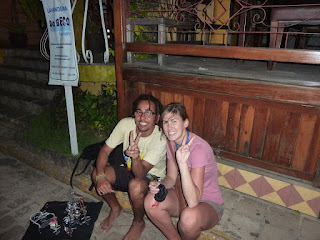This kinda went viral amongst friends recently and at first I thought it was a joke. Is it all really possible? In Sao Paulo, indeed it is. Story taken from Forbes ....
´´Banco Itaú branch located on Paulista Avenue
On the night of Saturday, August 27, precisely at 11:50 p.m., 12 men
in gray uniforms entered one of São Paulo’s most highly secured
buildings, the Banco Itaú‘s bank branch located on Paulista Avenue,
the very financial and business heart of Brazil’s biggest metropolis.
They passed through the security check at the bank’s underground
parkade by identifying themselves as furnishing workers – a perfect
disguise, since the branch was under renovations and the guards at the
building had been previously warned about people coming in that night.
Without firing a single shot, they spent the following 10 hours
breaking into some 170 private strongboxes belonging to at least 120
wealthy clients of Banco Itaú, Latin America’s largest bank by market
value. Only two security guards were disarmed, the first when the
thieves seized the ground floor where the entrance door to the branch
was opened, so the other members of the team could enter; and the
other when he arrived in the morning for his work shift. Five other
men spent the whole night outside, to keep the rest of the pack aware
of any possible casualties, should something have gone wrong.
Gallery: Global High Performers
On the next morning, the thieves left with cash, luxury watches, gold
bars, sapphires, emeralds, rubies and diamonds. Loads of diamonds.
According to the most optimistic estimates, the total amount of
valuables taken was about R$ 100 million ($58.5 million). Little of
the loot was insured (banks don’t usually ask their customers about
the contents of their safety deposit boxes,) and much of it appeared
difficult to trace. Banco Itaú only guarantees the compensation of R$
15.000,00 ($8,800) per deposit box. Those whose valuables are worth up
to R$ 200.000,00 ($117,000) can opt for an insurance plan provided by
the bank. If the amount to be secured is higher than that, an external
insurance company must be hired for the service. Most clients,
however, never thought of being ripped off in such a way.
Among the victims who did not have insurance is Therezinha Maluf
Chamma, the 82-year-old sister of the legally troubled former State
Governor of São Paulo, Paulo Salim Maluf. For more than 30 years,
Chamma kept hers and her daughters’ jewellery in two deposit boxes at
the Banco Itaú branch. Everything was stolen, including a diamond
necklace by Van Cleef & Arpels and a ring encrusted with a diamond of
the size of a big cherry. The family’s loss was R$ 1 million
($585,000) or more. Two collections of luxury watches were also taken,
one of which contained 143 Rolex watches worth more than R$ 2 million
($1,170,000). Another client lost two jewellery cases, one being an
18th Century Prussian jewellery case studded with rubies, and made of
silver and ivory, which sheltered inside a collection of 33 rough
diamonds extracted from African and Brazilian mines. The other was a
wooden box decorated with silver containing 58 Colombian emeralds in
its interior, in sizes varying from 1 to 3 carats. Together, the boxes
are worth R$ 12 million ($7 million).
Due to the amazingness of the situation, one should expect that the
police would take immediate action. But that’s not what happened at
all. In spite of being prompt informed by Banco Itaú about the crime,
the police department responsible for handling bank robberies in São
Paulo only began to investigate the case a week after it took place.
Even the security guards who worked that night were interrogated only
11 days after the robbery, not to mention that investigators didn’t do
much during the time known as the ‘Golden 48,’ in reference to the
relevance of collecting evidence and interviewing witnesses during the
48 hours after a crime is committed, a period after which the
likelihood of solving it drops precipitously.
There’s already suspicion of self-dealing in a fishy deal between key
members of the investigation team and the thieves, especially because
the São Paulo police has a history in this regard. In the past, some
of its officials extorted money from Colombian drug lords, including
Juan Carlos Ramírez Abadía, and also from burglars responsible for
several bank thefts over the past years.
Because of that, a lot of the victims are hiring private investigation
agencies such as the New York-based RCI First Security and
Intelligence Advising, which already contacted hundreds of cutters,
jewellers, auctioneers and money changers from all over the globe in
order to locate some of the stolen goods. The fact that the
investigations were delayed, though, is a major problem. Timing is
crucial in these cases, since the thieves will always try to go away
as soon as possible to avoid being tracked down.
As soon as they heard the shocking news of the robbery, the directors
of Banco Itaú set up a crisis committee to monitor the situation and
make an exhaustive assessment of the consequences of this
unprecedented theft, which, for some reason, only became public last
week. For a bank, a huge robbery like the one in this case can somehow
be compared to a plane crash for an airliner. Some 40 managers at the
bank were ordered to put aside their daily tasks and devote to
personally inform clients that their precious goods had been stolen.
Many have had to be medicated after receiving the news.
Meanwhile, investigators are trying to identify the thieves thanks to
the only clue they have left: Although they’ve destroyed much of the
surveillance system, some of the security cameras went unnoticed to
them. Based on the video footage, 12 thieves have been identified so
far. And it is quite likely that the mentors of the Banco Itaú
burglary are the same behind the Banco Central burglary at Fortaleza,
one of the world’s largest burglaries.
On the weekend of August 6, 2005 and August 7, 2005 a gang of burglars
tunneled into the Banco Central in Fortaleza, a city in north-eastern
Brazil. They removed five containers of R$ 50 notes, with an estimated
value of R$ 164,755,150 ($95 million) and weighing about 3.5 tons. The
money was uninsured; a bank spokeswoman stated that the risks were too
small to justify the insurance premiums. The burglars managed to evade
or disable the bank’s internal alarms and sensors; the burglary
remained undiscovered until the bank opened for business on the
morning of Monday, August 8, 2005. So far, authorities have recovered
more than $8.93 million, while the remaining is still unaccounted for.
The Banco Central robbery inspired a just-released movie that is
already a contender for representing Brazil at the 2012 Academy
Awards. The question is whether a possible sequel of the movie will
have a happy ending for the victims or the thieves.´´














